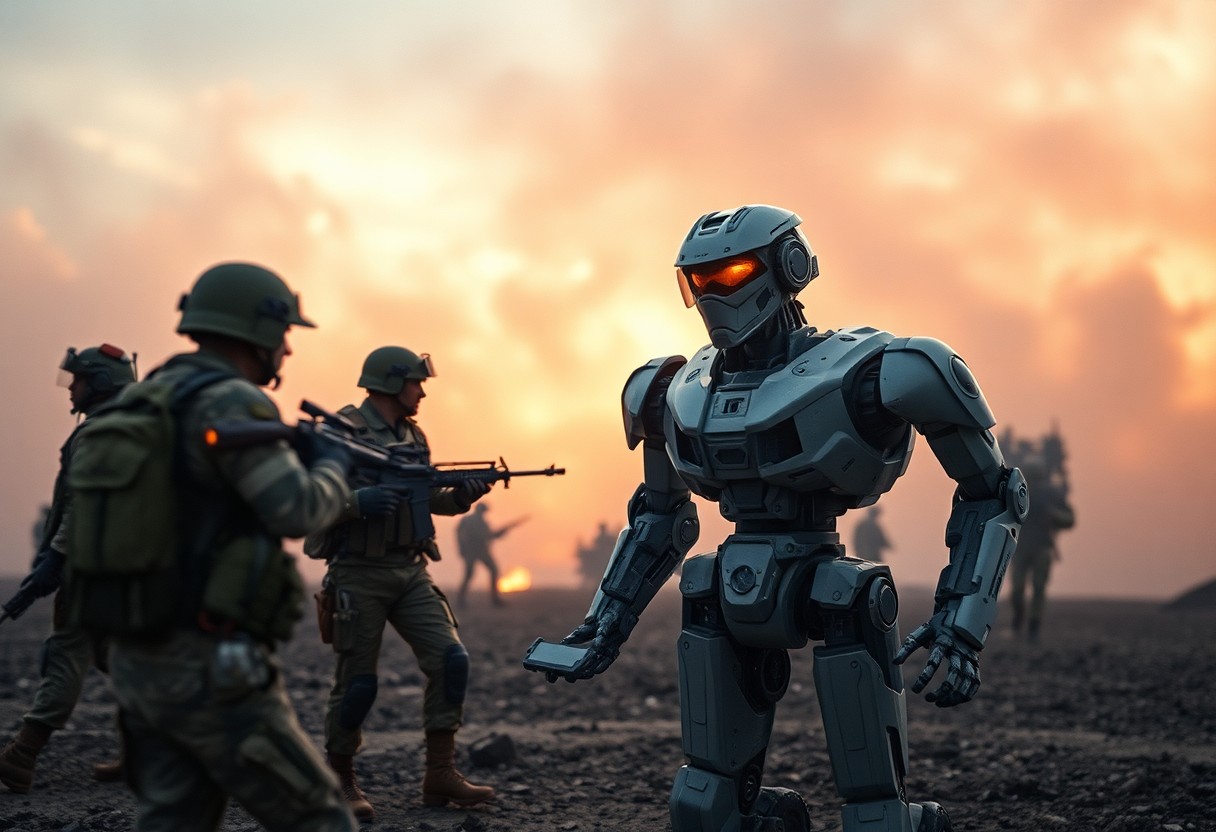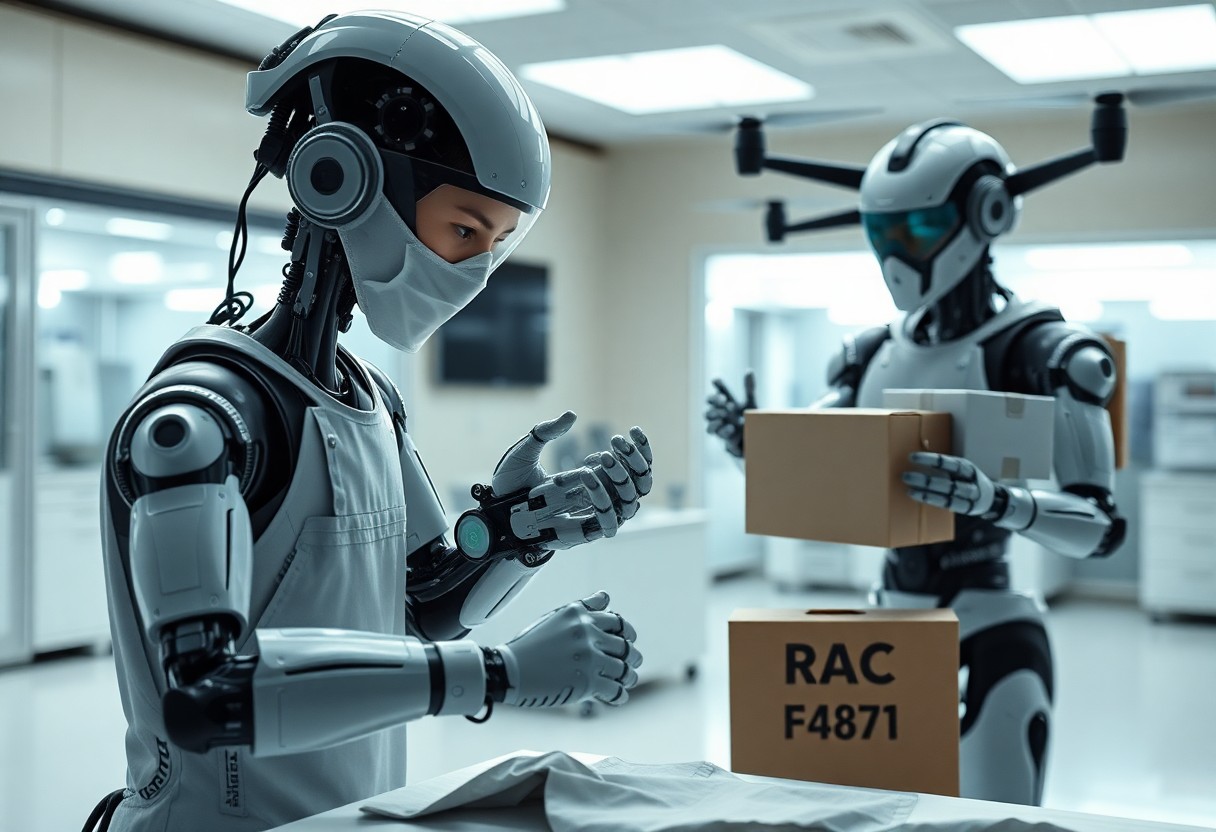Ethics play a pivotal role in the ongoing integration of military robots into modern warfare. As you explore the implications of this technology, it is important to weigh the benefits of innovation against the potential for unintended consequences. Military robots promise enhanced efficiency and reduced risk to human soldiers, yet they also raise significant ethical questions about accountability, decision-making, and the dehumanization of conflict. In this blog post, you will gain insights into how to navigate these challenges while ensuring that responsibility remains at the forefront of technological advancement.
The Evolution of Military Robots
To understand the trajectory of military robots, it’s important to recognize how they have evolved from simple remote-controlled devices to advanced autonomous systems. Military robotics have transformed the landscape of warfare, introducing new capabilities that enhance operational efficiency. As technology continues to progress at a rapid pace, you should be aware of the ethical implications and responsibilities that accompany these innovations.
Historical Context
An examination of military robots reveals their roots in the early 20th century, where initial forms included rudimentary remote-controlled vehicles used for logistical support. Over time, these technologies matured, driven by the demands of modern warfare and the pursuit of safety and efficiency on the battlefield. You can appreciate how historical developments have laid the groundwork for today’s more advanced systems.
Technological Advances
By analyzing the technological advances in military robotics, you can see how innovations such as artificial intelligence, machine learning, and enhanced sensors have redefined their capabilities. These technologies enable robots to carry out tasks that enhance situational awareness and decision-making processes, ultimately improving tactical effectiveness in combat scenarios.
The continuous improvements in robotics technology have led to the deployment of unmanned aerial vehicles (UAVs), ground robots, and underwater drones, all of which are equipped with sophisticated sensors and AI capabilities. These advancements allow for more precise operations, reducing human risk while maximizing mission efficiency. As you explore these developments, keep in mind the importance of balancing innovation with responsibility, especially regarding the ethical implications of using such powerful tools in military contexts.
Ethical Frameworks in Military Robotics
Any discussion on military robotics must consider established ethical frameworks that guide their development and deployment. By assessing these frameworks, you can better understand the moral implications of using robotic technology in combat scenarios, ensuring that innovation aligns with principles of justice and accountability.
Just War Theory
Any examination of military robotics should include Just War Theory, which provides a moral guideline for engaging in warfare. As you explore this theory, you’ll find it emphasizes the importance of proportionality and distinction, ensuring that military actions can be justified, even when employing advanced technologies.
Utilitarianism
At the heart of ethical discussions surrounding military robots lies utilitarianism, a framework that assesses actions based on their outcomes. In evaluating military robotics through a utilitarian lens, you weigh the potential benefits against the harms caused, striving to achieve the greatest good for the greatest number.
Just as you must consider the implications of your choices in everyday life, utilitarianism invites you to evaluate military robotics based on their impacts on human lives and broader societal consequences. When applied to military contexts, it encourages you to analyze whether deploying robotic systems will lead to a significant reduction in overall suffering compared to traditional methods. This approach can help shape your understanding of ethical responsibility in warfare, as you assess the balance between innovation and the potential loss of life.
Accountability and Liability Issues
Some of the most pressing concerns surrounding military robots revolve around accountability and liability in their deployment. As these systems become more autonomous, determining who is responsible when a mistake occurs becomes increasingly complex. You may find yourself questioning how to navigate the blurred lines of accountability between operators, manufacturers, and military leadership. Understanding these issues is fundamental to ensuring that innovation aligns with responsible practices in military operations.
Decision-Making in Autonomous Systems
Accountability in autonomous systems is particularly challenging due to the decision-making algorithms that govern their actions. You need to consider how these algorithms are designed and the ethical implications of their choices in real-world situations. Should a robot make a lethal decision, who bears the responsibility? The lack of human intervention in critical decisions raises significant ethical questions that must be addressed as technology advances.
Legal Frameworks
Legal frameworks governing the use of military robots are still developing, leaving many gaps in policies that address accountability and liability. You might engage with existing laws, but the rapid evolution of technology often outpaces these regulations. The challenge is to create legal structures that not only hold parties accountable but also adapt to the ethical challenges posed by autonomous military operations.
Also, these legal frameworks must balance military necessity with humanitarian principles. The existing international laws, such as the Geneva Conventions, may not fully encompass the complexities introduced by robotics in warfare. You should be aware that as new technologies emerge, lawmakers and ethicists are working to establish guidelines that reflect modern warfare’s realities while ensuring compliance with traditional legal standards. Engaging with these evolving discussions can help you navigate the future landscape of responsibility in military robot usage.
Impact on Soldiers and Warfare
Your understanding of modern warfare is incomplete without considering how military robots are reshaping the battlefield dynamics and the experience of soldiers. The integration of robotic systems into combat operations not only changes strategies but also affects soldiers’ roles, responsibilities, and mental well-being. As technology evolves, it’s necessary to evaluate both the advantages and ethical questions surrounding these innovations.
Psychological Effects on Operators
Warfare in an era dominated by robotic systems can have significant psychological effects on operators. While drones and autonomous units reduce physical risk, they may also lead to emotional detachment from the realities of combat. This disconnection can result in challenges like desensitization, increased stress, and moral dilemmas, ultimately impacting mental health and decision-making in high-pressure situations.
Changing Battlefield Dynamics
With the advent of military robots, traditional battlefield dynamics are transformed, pushing the boundaries of combat scenarios and strategies. These technological advancements create new opportunities for surveillance, reconnaissance, and precision strikes, enabling military forces to operate from a distance and gather intelligence without risking human lives. However, as this shift occurs, it’s vital to analyze the strategic implications and ethical considerations associated with increasing reliance on automation in warfare.
Battlefield tactics are evolving as military robots introduce enhanced capabilities that were unimaginable a few decades ago. By allowing for remote operation and reducing the need for troop deployment in dangerous situations, these technologies can alter how conflicts are approached. However, the reliance on robots can also lead to a detachment from the consequences of warfare, making it imperative to address the moral and psychological ramifications for soldiers, as both the technology and ethical landscape continue to advance.
Civilian Protections and Risks
Unlike traditional warfare, the deployment of military robots raises unique ethical challenges regarding civilian safety. While these robots can enhance operational efficiency, they also pose significant risks to non-combatants, particularly when deployed in densely populated areas. You must consider the implications of utilizing such technology in conflict zones where innocent lives are at stake, weighing the advantages of innovation against the need for humanitarian protection.
Collateral Damage Considerations
For military robots, the potential for collateral damage is a pressing concern. While designed to minimize risks, their reliance on automated systems can lead to misidentifications and unintended consequences. You should be aware that the technology is not infallible, and its limitations might exacerbate the dangers faced by civilians.
The Role of Oversight
Around the use of military robots, oversight mechanisms are important to ensure accountability and ethical standards are met. You must understand that without appropriate regulations, the deployment of these technologies can lead to violations of human rights and increased civilian casualties, undermining the very principles of warfare ethics.
It is imperative to establish comprehensive oversight frameworks that involve multiple stakeholders, including governments, international organizations, and civil society. You should advocate for transparency in military operations involving robots, ensuring that their deployment adheres to ethical guidelines. By fostering collaboration and dialogue among these groups, you can help create a system of checks and balances that promotes responsible use of military technology, ultimately safeguarding civilian lives and upholding moral standards in warfare.
Balancing Innovation with Ethical Responsibility
After examining the complexities surrounding military robots, it becomes clear that achieving a balance between innovation and ethical responsibility is imperative. You may find yourself grappling with the potential benefits of technology against the moral implications of its deployment. Engaging in thoughtful discourse and applying ethical frameworks will allow you to navigate this challenging terrain, paving the way for responsible advancements in military robotics.
Guidelines for Development and Deployment
Innovation in military robotics must be guided by a robust ethical framework. You should establish clear guidelines that prioritize human safety, accountability, and transparency in development. Ensuring that these principles are followed throughout the design and deployment processes will help mitigate potential misuse and foster public trust.
Engaging Stakeholders
One of the key aspects of responsible innovation is actively engaging stakeholders in discussions surrounding military robots. You must recognize the diverse viewpoints of various groups, including policymakers, military personnel, ethicists, and the general public.
Stakeholders can provide valuable insights that shape the ethical landscape of military robotics. By facilitating open dialogues, you foster a collaborative environment where differing opinions are respected and integrated into decisions. This inclusive approach not only enhances the accountability of military technology but also ensures that your innovations align with societal values and safety standards.
Conclusion
Drawing together the insights on ethical considerations in the use of military robots, you can appreciate the delicate balance between innovation and responsibility. As you navigate these complex issues, it’s imperative to consider how technological advancements impact human life and the moral implications of their deployment. Your approach should prioritize accountability, transparency, and the preservation of human dignity while harnessing the benefits of automation in military operations. By doing so, you contribute to a future where military technology is used responsibly and ethically.






